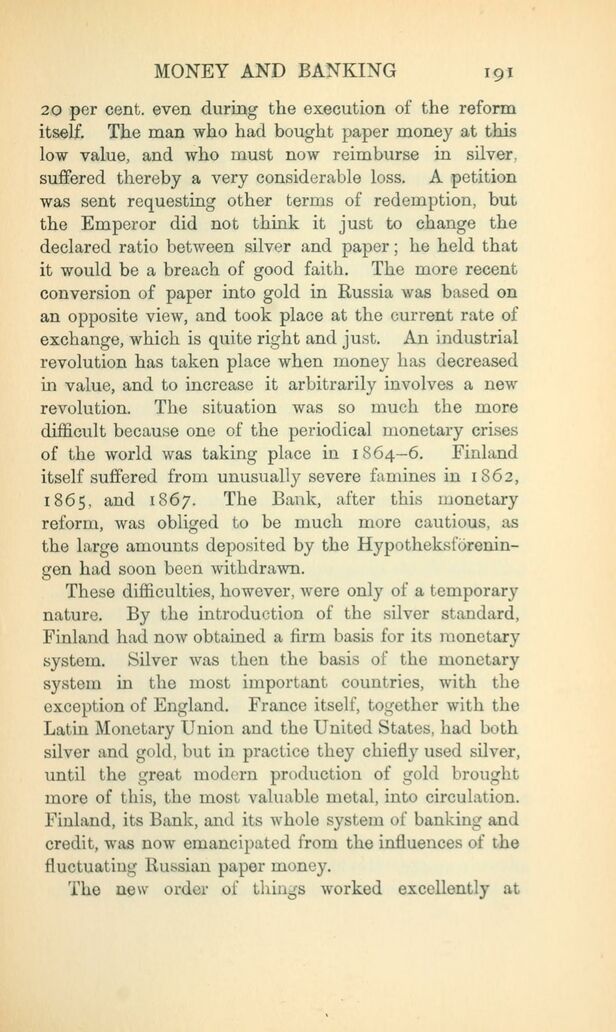
Full resolution (JPEG) - On this page / på denna sida - VIII. Money and Banking

<< prev. page << föreg. sida << >> nästa sida >> next page >>
Below is the raw OCR text
from the above scanned image.
Do you see an error? Proofread the page now!
Här nedan syns maskintolkade texten från faksimilbilden ovan.
Ser du något fel? Korrekturläs sidan nu!
This page has been proofread at least once.
(diff)
(history)
Denna sida har korrekturlästs minst en gång.
(skillnad)
(historik)
20 per cent. even during the execution of the reform
itself. The man who had bought paper money at this
low value, and who must now reimburse in silver,
suffered thereby a very considerable loss. A petition
was sent requesting other terms of redemption, but
the Emperor did not think it just to change the
declared ratio between silver and paper; he held that
it would be a breach of good faith. The more recent
conversion of paper into gold in Russia was based on
an opposite view, and took place at the current rate of
exchange, which is quite right and just. An industrial
revolution has taken place when money has decreased
in value, and to increase it arbitrarily involves a new
revolution. The situation was so much the more
difficult because one of the periodical monetary crises
of the world was taking place in 1864-6. Finland
itself suffered from unusually severe famines in 1862,
1865, and 1867. The Bank, after this monetary
reform, was obliged to be much more cautious, as
the large amounts deposited by the Hypotheksföreningen
had soon been withdrawn.
These difficulties, however, were only of a temporary
nature. By the introduction of the silver standard,
Finland had now obtained a firm basis for its monetary
system. Silver was then the basis of the monetary
system in the most important countries, with the
exception of England. France itself, together with the
Latin Monetary Union and the United States, had both
silver and gold, but in practice they chiefly used silver,
until the great modern production of gold brought
more of this, the most valuable metal, into circulation.
Finland, its Bank, and its whole system of banking and
credit, was now emancipated from the influences of the
fluctuating Russian paper money.
The new order of things worked excellently at
<< prev. page << föreg. sida << >> nästa sida >> next page >>